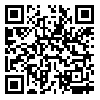Volume 30, Issue 3 (10-2017)
J Dent Med-tums 2017, 30(3): 183-191 |
Back to browse issues page
Download citation:
BibTeX | RIS | EndNote | Medlars | ProCite | Reference Manager | RefWorks
Send citation to:



BibTeX | RIS | EndNote | Medlars | ProCite | Reference Manager | RefWorks
Send citation to:
Hosseini E T, Davari A, Esfahani M A. Radiopacity investigation of two types of bases and liners in comparison with dental structure, using a digital radiography system. J Dent Med-tums 2017; 30 (3) :183-191
URL: http://jdm.tums.ac.ir/article-1-5685-en.html
URL: http://jdm.tums.ac.ir/article-1-5685-en.html
1- Associate Professor, Department of Radiology, School of Dentistry, Shahid Sadoughi University of Medical Sciences, Yazd, Iran
2- Professor, Department of Operative Dentistry, School of Dentistry, Shahid Sadoughi University of Medical Sciences, Yazd, Iran; Member of Social Determinant of Oral Health Research Center, School of Dentistry, Shahid Sadoughi University of Medical Sciences, Yazd, Iran
3- Student of Dentistry, School of Dentistry, Shahid Sadughi University of Medical Sciences, Yazd, Iran
2- Professor, Department of Operative Dentistry, School of Dentistry, Shahid Sadoughi University of Medical Sciences, Yazd, Iran; Member of Social Determinant of Oral Health Research Center, School of Dentistry, Shahid Sadoughi University of Medical Sciences, Yazd, Iran
3- Student of Dentistry, School of Dentistry, Shahid Sadughi University of Medical Sciences, Yazd, Iran
Abstract: (14863 Views)
Background and Aims: Radiopacity is an essential requirement for all restorative materials. Radiopaque materials allow the dentist to diagnose and assess radiographically the restoration, primary caries, assessment of contours, overhang and secondary caries. The aim of this study was to evaluate the radiopacity of two types of dental bases and liners in comparison whit dental structure using a digital radiography system.
Materials and Methods: Two classes of materials were prepared: 1 mm and 2 mm thickness disks for glass inomer and 1 mm and 0.5 mm thicknesses for dycal. Specimens of enamel and dentine with the same thicknesses were obtained. As a control, an aluminum step wedge was used. Samples were positioned over a phosphor-ray, plate of min ray soredex system, exposed, and the images were analyzed using the contour dent software. ANOVA analysis was used to investigate the significance of differences among the groups. For pairwise comparisons, the Bonferroni test was applied (P<0.005).
Results: 0.5 mm diameter of self-cure and light cure dycal and enamel, presented radio-opacity higher than that of dentine, except for the light cure dycal that had radiopacity lowers than enamel. 1 mm diameter of all the groups presented higher radiopacity than dentin. Light cure and self-cure glass inomer and self-cure dycal presented radiopacity higher than enamel. Enamel showed radipacity higher than light cure dycal in 2 mm diameter self-cure. Light cure glass inomer presented radiopacity higher than that of enamel and dentin.
Conclusion: The increased thickness of the materials evaluated increased their radio-opacity. It was concluded that all the materials had lower radiopaaty than dentin. Only enamel showed higher radiopacity than light-cured dycal.
Materials and Methods: Two classes of materials were prepared: 1 mm and 2 mm thickness disks for glass inomer and 1 mm and 0.5 mm thicknesses for dycal. Specimens of enamel and dentine with the same thicknesses were obtained. As a control, an aluminum step wedge was used. Samples were positioned over a phosphor-ray, plate of min ray soredex system, exposed, and the images were analyzed using the contour dent software. ANOVA analysis was used to investigate the significance of differences among the groups. For pairwise comparisons, the Bonferroni test was applied (P<0.005).
Results: 0.5 mm diameter of self-cure and light cure dycal and enamel, presented radio-opacity higher than that of dentine, except for the light cure dycal that had radiopacity lowers than enamel. 1 mm diameter of all the groups presented higher radiopacity than dentin. Light cure and self-cure glass inomer and self-cure dycal presented radiopacity higher than enamel. Enamel showed radipacity higher than light cure dycal in 2 mm diameter self-cure. Light cure glass inomer presented radiopacity higher than that of enamel and dentin.
Conclusion: The increased thickness of the materials evaluated increased their radio-opacity. It was concluded that all the materials had lower radiopaaty than dentin. Only enamel showed higher radiopacity than light-cured dycal.
Type of Study: Research |
Subject:
general
Received: 2017/12/5 | Accepted: 2017/12/5 | Published: 2017/12/5
Received: 2017/12/5 | Accepted: 2017/12/5 | Published: 2017/12/5
Send email to the article author
| Rights and Permissions | |
 |
This work is licensed under a Creative Commons Attribution-NonCommercial 4.0 International License. |




